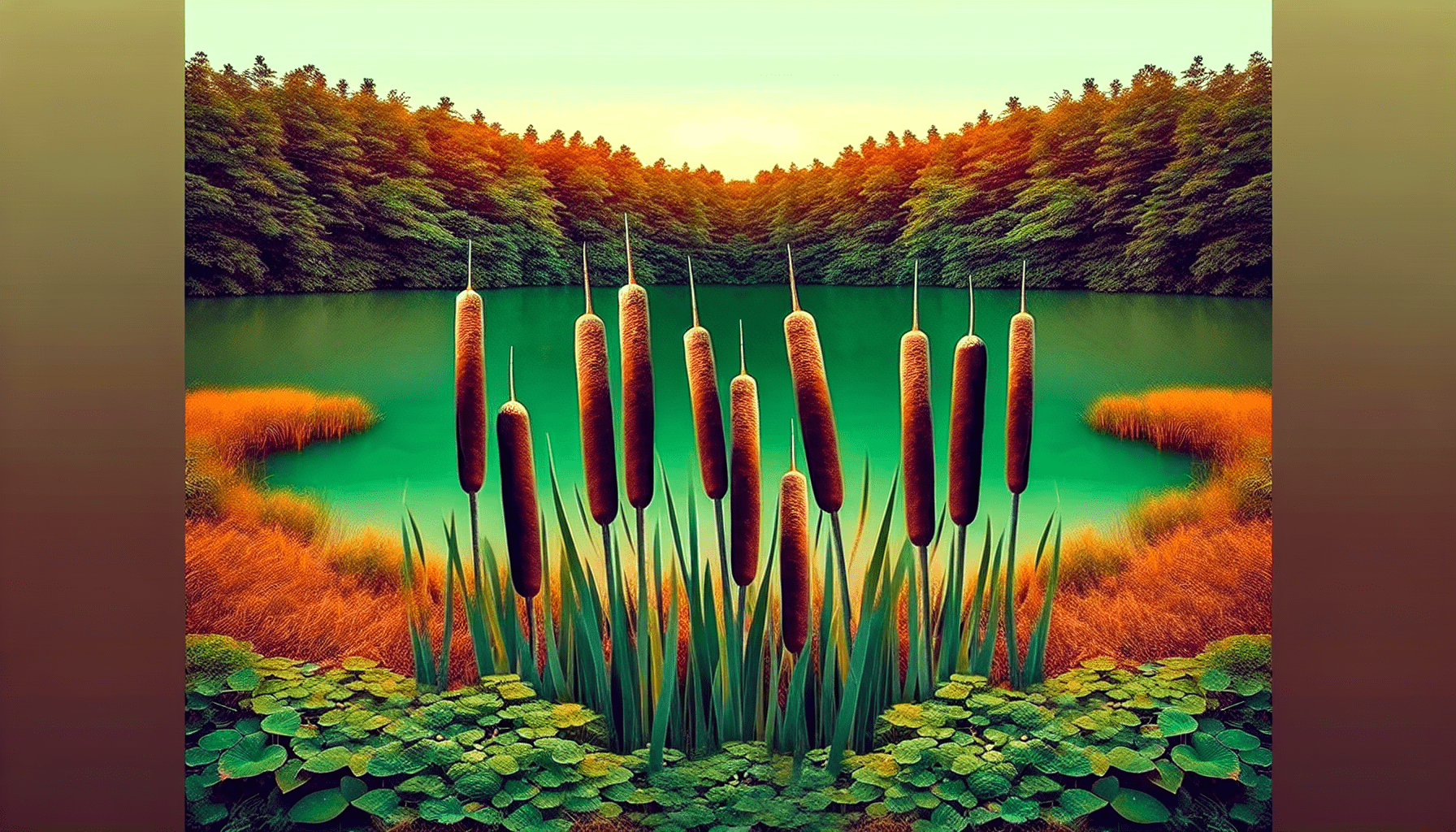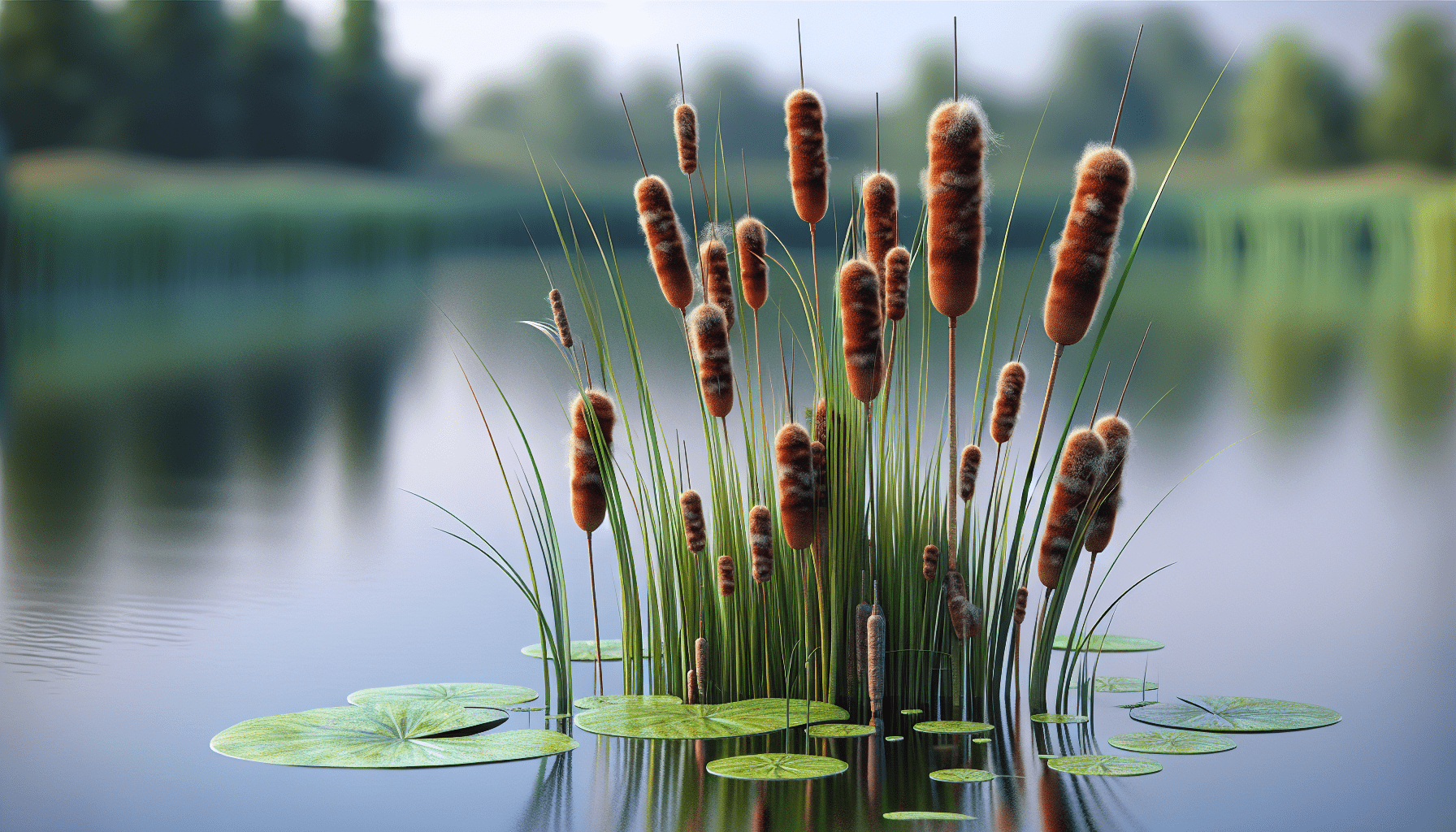While navigating the intricate world of aquatic flora, you may come across a fascinating specimen known as the Dwarf Cattail. This plant holds a distinguished presence in water-based ecosystems due to its unique attributes. Your curiosity may lead you to ask about its origins, botanical features, ecological importance, and propagation methods. As you immerse yourself in this article, you will gain a comprehensive understanding of the Dwarf Cattail, an aquatic marvel that illustrates the beauty and variety of nature’s waterborne creations.

Definition and description of Dwarf Cattail
Dwarf Cattail, a perennial aquatic plant, is a vibrant member of the plant kingdom. Its herbaceous features perfectly blend with its hydrophilic nature, making it an essential part of wetlands, marshes, and stagnant water bodies.
Botanical name and other common names
Botanically classified as Typha minima, Dwarf Cattail is known by several common names, including Miniature Cattail, Least Bulrush, and Small Reed Mace. Its varied monikers reflect its diverse presence across different regions and cultures worldwide.
Physical characteristics and morphology
In the world of aquatic plants, the Dwarf Cattail stands out due to its physical characteristics. It is the smallest member of the Typha genus, growing only up to 60 cm in height. Its thin leaves have a soft, matte texture, and its cylindrical brown spikes, which are studded with tiny densely packed flowers, are a defining morphological trait.
Natural habitat of the Dwarf Cattail
As an aquatic plant, the natural habitat of Dwarf Cattail includes places where water is abundant. It thrives in marshes, lakes, and pond margins with shallow water levels. It can also grow in damp soil, making it a flexible resident of various aquatic and semi-aquatic natural environments.
Growth and reproduction of Dwarf Cattail
Understanding the growth and reproduction strategies can provide valuable insights into this plant’s survival settings and its influence on its surroundings.
Growth requirements
Dwarf Cattail requires full sun exposure and ample water for optimal growth. It also prefers slightly acidic to neutral pH conditions. Established plants can withstand droughts and harsh weather, highlighting their adaptability to a range of growing conditions.
Seasonal changes in the plant
Seasons have profound effects on the Dwarf Cattail. It undergoes dormancy in winter, only to sprout and germinate again in spring. The warm summer months mark the growth peak with the plant bearing flowers and seeds.
Flowering and seed production
Dwarf Cattail produces cylindrical, fluffy brownish flower spikes during late spring and early summer. These spikes consist of many minute flowers that mature into seeds. A single plant can produce thousands of seeds, aiding the plant’s abundant propagation.
Methods of reproduction and propagation
Reproduction in the Dwarf Cattail takes place through both seeds and vegetative means. Dispersed mainly by wind and water, the seeds can find new habitats. The rhizomes also contribute to local spread, with a single mature plant capable of colonizing a vast area over time.
Uses of Dwarf Cattail
Dwarf Cattail’s various uses extend from landscaping to nutritional to medicinal areas, proving its multifunctional nature.
Uses in landscaping and decoration
Because of its compact size and unique flower spikes, Dwarf Cattail is extensively used in beautifying landscape water bodies, like small ponds and water gardens.
Culinary uses
The young shoots and flower spikes of Dwarf Cattail have been consumed as food in various cultures. They can be eaten either raw or cooked and offer a unique, slightly sweet flavor.
Medicinal uses
Historically, Dwarf Cattail was used for its medicinal properties. While its roots helped treat digestive disorders, its astringent leaves were applied to wounds and injuries to promote healing.
Potential uses in biofuel production
The high biomass yield and its ability to grow in water-logged conditions make Dwarf Cattail a potential candidate for biofuel production, providing a viable alternative to fossil fuels.

Cultivation and maintenance of Dwarf Cattail
Cultivating Dwarf Cattail requires an understanding of its growth conditions and maintenance needs.
Optimal growing conditions
Dwarf Cattail best thrives in areas with full sun exposure and can adapt to various soil types, provided they are waterlogged or damp. The planting should be preferably done in spring when the conditions are favorable for growth and propagation.
Watering and nutrition requirements
Dwarf Cattail requires frequent watering to mimic its natural habitat. It is adaptable to low nutrient environments but may need occasional fertilization for vigorous growth.
Maintaining and trimming the plant
Due to its potential to spread aggressively by rhizomes, Dwarf Cattail requires regular monitoring and trimming to prevent excessive growth, especially in landscapes.
Control of pests and diseases
Dwarf Cattails are generally resilient against most pests and diseases. However, preventive measures like maintaining optimal growing conditions and early detection of diseases can help in controlling potential threats.
Benefits of Dwarf Cattail to the ecosystem
This aquatic plant offers several benefits to the ecosystems where it thrives.
Role in water purification
Dwarf Cattail absorbs several heavy metals and pollutants from the water, contributing to its purification.
Benefits in erosion control
Its roots hold the soil firmly, mitigating soil erosion, and promoting bank stability around water bodies.
Role as a food source for wildlife
Dwarf Cattail offers a food source for various birds, insects, and other wildlife, contributing to the biodiversity in its ecosystem.
Importance in creating wildlife habitat
The dense colonies of Dwarf Cattail provide nesting and hiding spots for small aquatic animals and birds, fostering vibrant wildlife habitats.
Threats and challenges to Dwarf Cattail
Despite its vast benefits and potential uses, the survival of Dwarf Cattail is not without challenges.
Impact of pollution
Water pollutants, particularly heavy metals, can adversely affect the growth and development of Dwarf Cattail, causing severe loss to its populations.
Threat from invasive species
Competing invasive species can overwhelm Dwarf Cattail, leading to habitat loss and reduced biodiversity.
Challenges of climate change
Changes in temperature and rainfall patterns due to climate change can pose significant challenges to the growth and survival of this plant species.
Issues with overharvesting and habitat destruction
Overharvesting for various uses and habitat destruction due to land development can also be threats to Dwarf Cattail’s sustainability.
Conservation efforts for Dwarf Cattail
Given the numerous benefits and uses of Dwarf Cattail, making efforts toward its conservation becomes essential.
Efforts at the local and national level
At local and national levels, efforts are being made to conserve and protect the natural habitats of Dwarf Cattail. These efforts involve implementing policies protecting wetlands and restricting overharvesting.
International conservation initiatives
Internationally, treaties like the Ramsar Convention are promoting the conservation and sustainable use of wetlands and their biodiversity, including Dwarf Cattail.
Role of non-profit organizations and community groups
Non-profit organizations and community groups conduct awareness campaigns and community-based conservation initiatives for the preservation of Dwarf Cattail and related wetland ecosystems.
Research efforts aimed at conservation
Scientific research aids in understanding the ecology and potential threats to Dwarf Cattail, providing appropriate strategies for its conservation and sustainable use.
Dwarf Cattail in culture and folklore
The cultural and historical significance of Dwarf Cattail extends across different cultures and societies.
Historical uses and significance
Historically, Dwarf Cattail was used for various purposes, from medicinal to culinary to craft materials, playing a significant role in traditional societies.
Symbolism in various cultures
In various cultures, Dwarf Cattail symbolizes resilience and adaptability due to its ability to thrive in challenging conditions.
Dwarf Cattail in art and literature
Art and literature have depicted Dwarf Cattail from time to time, highlighting its ecological beauty and cultural significance.
Modern cultural significance
Today, Dwarf Cattail is recognized as a crucial component of wetland environments, serving an important role in modern ecological culture.
Scientific research related to Dwarf Cattail
Research on Dwarf Cattail is generating significant insights into its biology, medicinal properties, and potential commercial uses.
Studies on the plant’s biology and ecology
Research efforts are centered around understanding the growth, reproduction, and ecological role of Dwarf Cattail. These scientific insights provide a holistic viewpoint on this plant’s existence and impact.
Research into its medicinal properties
The traditional medicinal value of Dwarf Cattail is being investigated scientifically, opening new avenues for its potential use in the healthcare sector.
Examination of potential commercial uses
Potential commercial applications, such as in biofuel production or phytoremediation, are being explored, capitalizing on the plant’s unique properties.
Investigations into its role in climate change mitigation
Research is ongoing to assess how Dwarf Cattail’s carbon sequestration capacity might contribute to climate change mitigation efforts.
Future outlook for Dwarf Cattail
The future of Dwarf Cattail, influenced by environmental change, conservation efforts, and commercial utilization prospects, seems promising.
Anticipated impacts of climate change
Climate change could pose challenges to Dwarf Cattail due to changing rainfall patterns and temperature levels. These potential impacts need to be addressed in future conservation strategies.
Potential for increased commercial use
With increasing interest in Dwarf Cattail’s commercial applications, its cultivation could potentially grow in the future.
Ongoing research and developments
Ongoing research on Dwarf Cattail’s various aspects will continue to shed light on new applications, enhancing its value within scientific and commercial circles.
Opportunities for conservation and public engagement
Raising conservation awareness and fostering public engagement in Dwarf Cattail’s preservation can secure its future. Its unique benefits to the environment and its potential commercial value make it a species worth advocating for.
The Dwarf Cattail is not just an aquatic plant; it encapsulates an array of uses, biological importance, and potential applications. Its journey from wetland habitats to the academic interests of researchers elucidates its ecological significance and commercial potential wrapped in unique adaptations. As climate change poses new challenges, the Dwarf Cattail stands as a beacon of resilience valid for conservation.